#king louis VI
Text
Historical figures should try being named something other than Louis. Especially the french ones. It's very rude of them to confuse us by all having the same name like that
#king louis I#king louis II#king louis III#king louis IV#king louis V#king louis VI#king louis VII#king louis VIII#king louis IX#king louis x#king louis xi#king louis xii#king louis xiii#king louis xiv#king louis xv#king louis xvi#king louis xvii#king louis xviii#louis philippe#louis philippe ii#louis napoleon#louis kosuff#all the gooddamn louis tagged for demonstrative purposes#there are more though
9 notes
·
View notes
Text
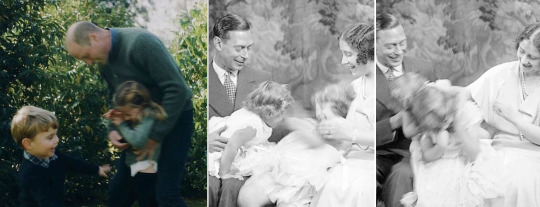





Tickle fight! || William & Charlotte, Lilibet & Margot, Peter & James, Louise & Isla, Charles & William, Diana & William, William, George, Charlotte & Louis, Charles & Diana, Elizabeth & Charles, Catherine & Louis
#from this gathered evidence William likes a tickle fight the most 🙃 (in 5 pics)...just here serving u scientific research👩🔬#BRF#British royals#Royal family#King Charles iii#Princess Diana#Princess of Wales#Kate Middleton#Princess Catherine#Prince Louis#Princess Charlotte#Peter Phillips#Isla Phillips#James Earl of Wessex#King George VI#Elizabeth Bowes-lyon#Queen Mother#Lady Louise Windsor#My edit#Collage#this was supposed to be 1 of my 1st posts I had for here & lol :'') I got lost with things :'') like... being here :'')
210 notes
·
View notes
Text
« Le Bal des Ardents »







Finished a seven pages summary of one of my favorite historic moment in French history « Le Bal des Ardents » ! It is set the 28 January 1389 .
Now some facts I couldn’t put in it !
Charles VI killed four men in a frenzy because he thought they were British soldier send to kill him ! They were in facts, only his close guard. The episode started after a man talked to him in the forest it all took place. He took 8 months to recover from this.
Strangely enough, even though « le Bal des Ardents » was a hugely traumatizing event, it is not the one that granted him his nickname « Le Fol » (the crazy ). It’s only 7 months after his mental health declined again without signs of improvements.
Infos kind of vary there but the event took place in the Hotel Saint-Pol OR the destructed and then reconstructed Hotel de la Reine Blanche.
Louis d’Orléans was 17 when it happened. People did think he did this to kill Charles VI and took the thrones. After the event he build the chapel « Le Couvent des Célestins » to expiate his crimes.
English is not my first languages also , sorry about the mistakes !!
#history#art#comic#digital art#France#france history#historic event#history comics#history comic#It was very long to do#cw: gore#cw body horror#Louis D'orléans#Charles VI#isabeau of bavaria#louis of Orléans#louis of orleans#charles 6#King#French King#france king
23 notes
·
View notes
Text

Louis VI le Gros takes the oriflamme at Saint-Denis, 1124
by Pierre-Jules Jollivet
#louis vi#king#france#franks#french#oriflamme#saint denis#louis le gros#art#pierre jules jollivet#abbey#church#cathedrals#cathedral#history#europe#european#medieval#middle ages#knights#knight#le batailleur#le gros#war#battle#versailles#banner#standard#flag#christianity
59 notes
·
View notes
Text

“The Wales kids are the most identical royal siblings since George Vs children, The Duke of Gloucester, George Vi, and Duke of Windsor.” - Submitted by Anonymous
#Prince George#Princess Charlotte#Prince Louis#king george vi#prince henry duke of gloucester#King Edward VIII
33 notes
·
View notes
Text

(Part 1!)
Now Wimbledon has begun, I wanted to share some of my favourite photos of Bertie playing tennis!

When he was still The Duke of York, he participated in a doubles match at Wimbledon with his mentor & friend, Louis Greig (above). Bertie was extremely anxious and asked to play on one of the outer courts, as opposed to Centre Court, to keep attention away from him. A compromise was eventually made for Court 2, where there was still a considerable crowd.

One spectator recalled that, ‘The Duke of York was very nervous and couldn’t play at all, at times lashing at the ball with his racquet…”
The Prince and Louis Greig lost the match in straight sets: 6-1, 6-3, 6-2 to Herbert Roper Barret and Arthur Gore - both considerably older and more experienced than the then 30-year-old Bertie! Some exasperated people in the crowd even yelled out that he should try playing with ‘the other hand’ (i.e. his right hand, as Bertie played tennis left handed). It is likely that his anxieties and quick temper —usually aimed at himself!— affected his game that day.
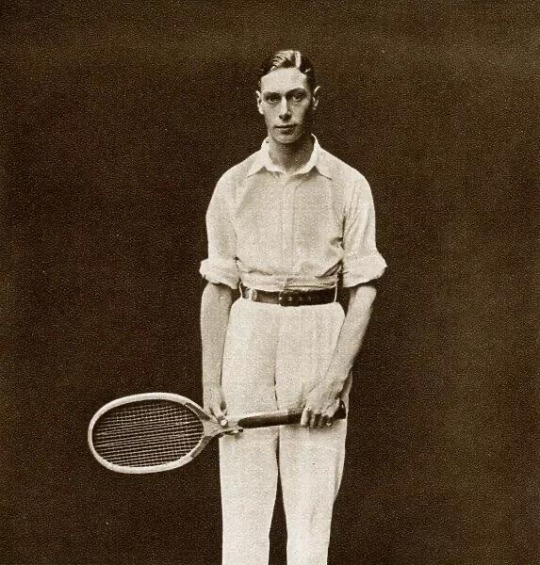
In reality, Bertie was, in fact, an extremely talented tennis player!
He had previously won the RAF doubles competition in 1920 (pictured above!) and when at White Lodge, he loved playing tennis with Elizabeth in the mornings, before breakfast.
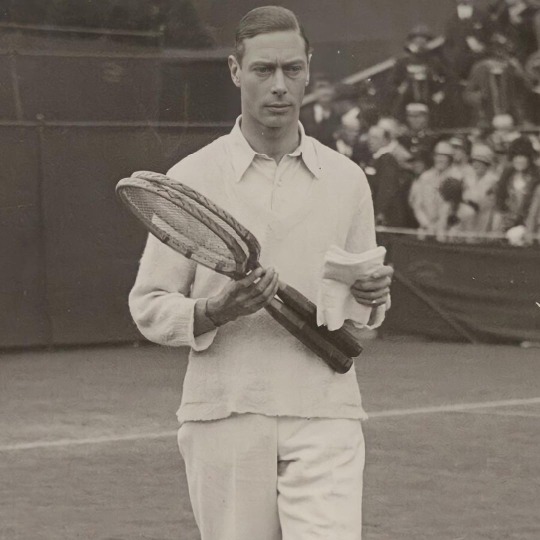
The ladies’ Wimbledon champion, Suzanne Lenglen, watched Bertie’s match on Court 2 that day and said that, ‘with plenty of practice’ he would have ‘the makings of a champion’. Nonetheless, the whole Wimbledon experience traumatised the sensitive Duke, and he never played a game in public again.
Sources: George VI, by Sarah Bradford; The King Maker, by Georgie Greig.
Photo credits: Getty, Alamy.
.
P.S. Sorry I've been very absent from this page! I'm so, so busy with work :( But I promise to catch up on all your questions, and I have a ton of Bertie to share when I get more time!
#bertie in his tennis whites#i'll be your ball girl pahahahah#king george vi#george vi#the monarchy#the british monarchy#the royal family#albert duke of york#long live the king#wimbledon#the british royal family#god save the king#tennis#louis greig#vintage sport#vintage sports#vintage wimbledon#prince albert duke of york#1920s tennis#the british empire
65 notes
·
View notes
Text
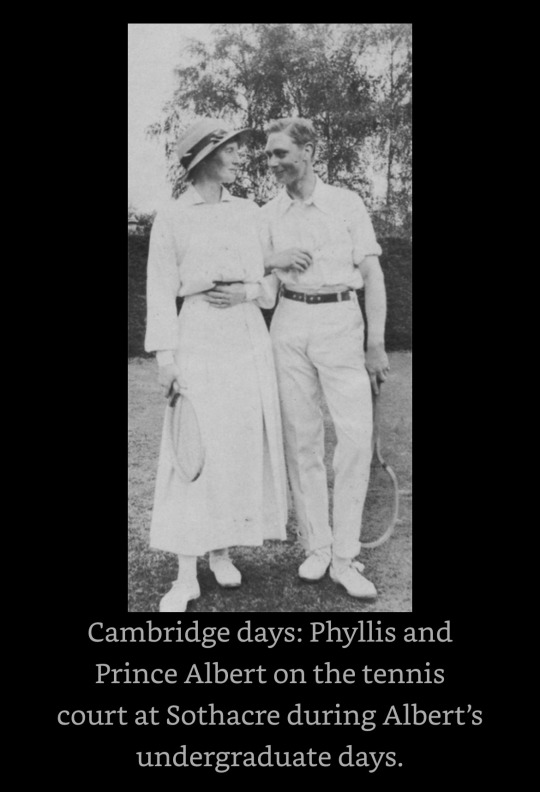
“Albert enjoyed having a second family life. He grew very attached to Phyllis, or Phiggie, as he called her, and would wander into the woods and fields when at Sandringham for the weekend to find jay feathers to send to her, sometimes writing two or three times in a single day. Phyllis provided some welcome maternal affection, while Louis was always the father figure urging Albert on, pushing him to have fun, to test himself and to embrace the opportunities before him. And Albert did gain confidence.”
- from The King Maker: The Man Who Saved George VI by Geordi Greig
Just my extra two cents: while I really enjoyed this book and its insights into the royal family (some of the Queen Mary stuff is great), I do sometimes feel that Louis Greig is given too much credit for Albert’s personal development. The success of their relationship was not owed to Louis alone - it was also because of Albert’s character; he was willing to listen and he worked very hard on himself. Almost too much so! He did credit Louis with "saving his life" (it was Greig who convinced George V to let his son have surgery for the ulcer that debilitated him for three years) but I think he was way too modest in that way; he always wanted to credit others for his own successes. But that's just my own opinion. No doubt, the relationship between Louis and Albert was an important one and Greig was the right man for the job.
And I just love the sweetness of this photo of Bertie & Phiggie! 🥰🤗🪶🎾
#oh Bertie!#I wish he would look at me that way ❤️#feathers for phiggie#prince albert duke of york#king george vi#Louis Greig#The King Maker#Geordi Greig#cambridge#favorite books#british royal family#1919-20
10 notes
·
View notes
Text
Shakespeare Weekend

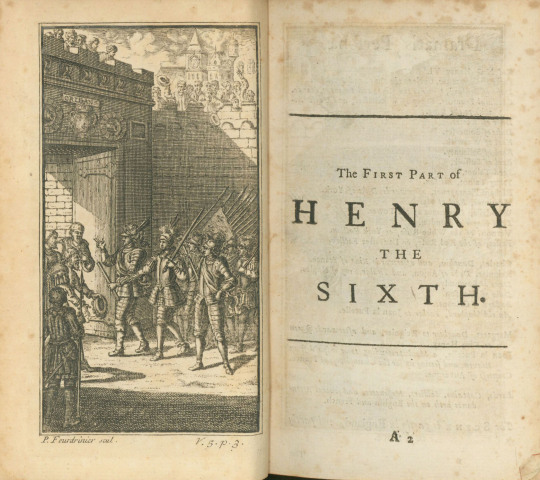
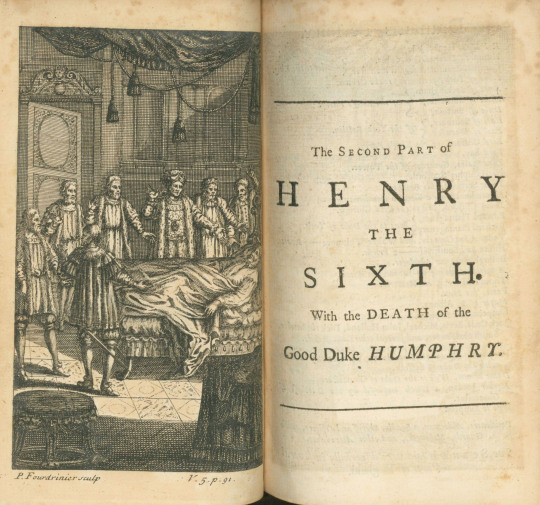


This weekend we return to The works of Mr. William Shakespear: in ten volumes with the fifth volume published in 1728 by Alexander Pope (1688-1744) and Dr. George Sewell (d. 1726) for Jacob Tonson. Volume Five is made up of King Henry VI Part I, King Henry VI Part II, King Henry VI Part III, and King Richard III. The four plays create a tetralogy that covers the entire saga of the Wars of the Roses, a series of 15th century civil wars fought to determine control of the English throne.
King Henry VI Part I enacts the loss of England’s French territories and the political momentum spurring on the Wars of the Roses. Part II delves into King Henry’s failings and the rise of the Duke of York. Part III documents the chaos and horror of war and contains one of the longest soliloquies in all of Shakespeare. The volume ends with King Richard III depicting the violent rise and short reign of King Richard III.
Like Rowe’s earlier collection, scene divisions, stage directions, dramatis personae, and full-page engravings by either French artist Louis Du Guernier (1677-1716) or Englishman Paul Fourdrinier (1698-1758) precede each play.
Pope’s editions of Shakespeare were the first attempted to collate all previous publications. He consulted twenty-seven early quartos restoring passages that had been out of print for almost a century while simultaneously removing about 1,560 lines of material that didn’t appeal to him. Some of those lines were degraded to the bottom of the page with his other editorial notes.
View more Shakespeare Weekend posts.
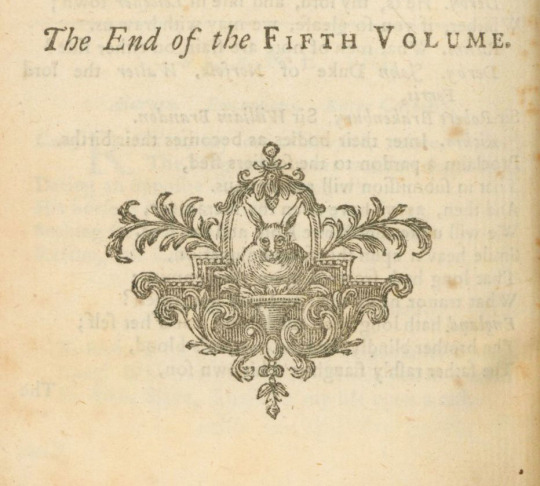
-Jenna, Special Collections Graduate Intern
#william shakespeare#shakespeare#alexander pope#dr. george sewell#jacob tonson#tetralogy#King Henry VI Part I#King Henry VI Part II#King Henry VI Part III#King Richard III#louis du guernier#paul fourdrinier#shakespeare weekend#engravings
17 notes
·
View notes
Note
This is not really a question but just popping into say that I am OBSESSED with your boy king Seb au.
Is this partially because Seb is my favourite driver? Yes. Is this partially due to the fact that history and by extension, historical fiction one of my favourite things ever? Yes.
This is a really random tangent but when you mentioned the AU being loosely based on the Spanish War of Succession, I was like I recognise this but from where? I looked it up and realised that I learnt a little about it when I studied Louis XIV. This also reminded of how much I used to love making fun of Louis XIV as well.
This just struck me as I was writing this but since Fernando is based on Philip and if I remember correctly comes from Renault (basically) in this au, would that make Flavio Briatore the Louis XIV in this universe...
Sorry for the really long text - I got carried away lmao
Nooooo don't apologize!! I absolutely love long asks, and I'm so glad you like the au so much!!!! That makes me so haopy to hear 🥹 But you're so real, this au does in fact stem from my obsessions with my f1 boys and history. I'm very happy to have found a way to combine my two major interests into one thing 🤭🤭 But as I said to someone earlier today, it often feels like this AU is just a way for me to force-feed people niche history trivia LOL
Imagining Flavio as Louis XIV gave me a heart attack sjkfkflf, that man cannot and should not have that amount of power 😭 Flavio is Fernando's top advisor!! I think he works better as someone working behind the scenes, in the shadows, the little devil on Fernando's shoulder. I like to imagine he's some merchant who gained enough reputation and favor, that Fernando's father or smth was like, yeah sure you can be my son's advisor....not knowing he'd become king later on.
I think he obviously genuinely really cares for Fernando and makes decisions in his best interest but uhhhhh is not upset when it also happens to put a bit of money in his own pocket. I imagine he was like, super gung-ho about the arranged marriage, and giving fernsndo all these platitudes like "don't you think this is your best chance at being King 🥺 maybe you can find true love 🥺" but then is also making deals behind the scenes sjkfkv. Just constantly doing mental arithmetic, weighing out and balancing how much he's benefitting Fernando, and how much he's benefitting himself. Also lol, I like to imagine he tries to be all schemey with Seb, but then can't help but become endeared with him(reminds him of a younger Fernando 🤧)
#im not sure who louis xiv would be hmmmm#i thought maybe Prost#but getting into the generation pre-Charles VI and such is opening up a giant can of worms 😭#im not mentally prepared trying to figure out all of those politics and roles haha#but yeah tps! all of them are advisors. and yknow all have their own ways of advising#tho i rly do find flavio particularly amusing. man he would do so well in this era#hes just casually trying to convince Fernando w the marriage and Fernando sees thru him like. ik what youre doing here#but knows even if flavio is doing a lot of shit that he rly does care for fernando most of all#maybe Fernando's father in this au was somewhat absent and flavio accidentally ended up filling that role#when he got offered the advisor position he wasnt expecting a *kid*#okay sry you didnt ask for this lore but im giving it to you anyways jdkfkg#catie.asks.#boy king au
7 notes
·
View notes
Text
Happy Father's Day!!! 💙
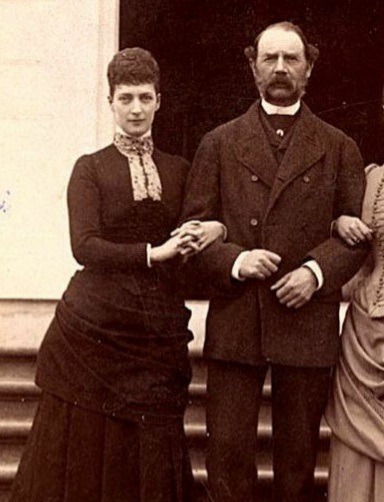
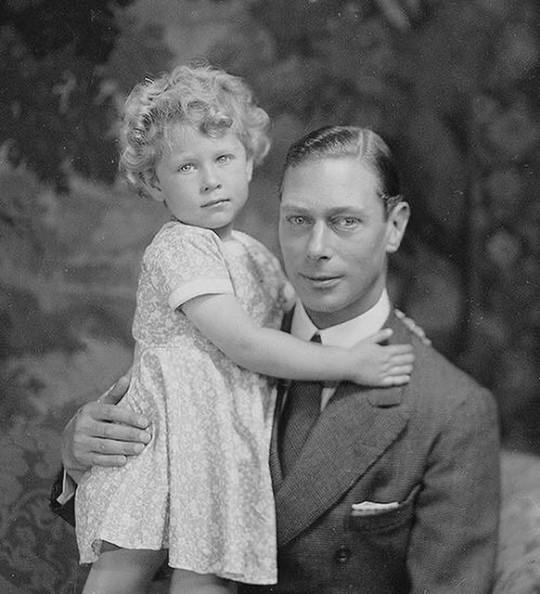
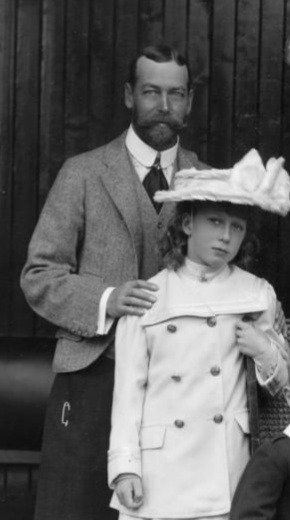

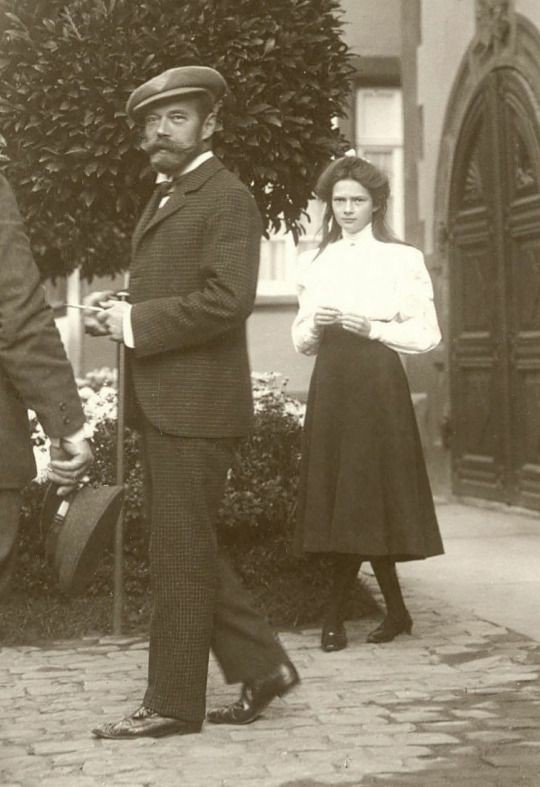
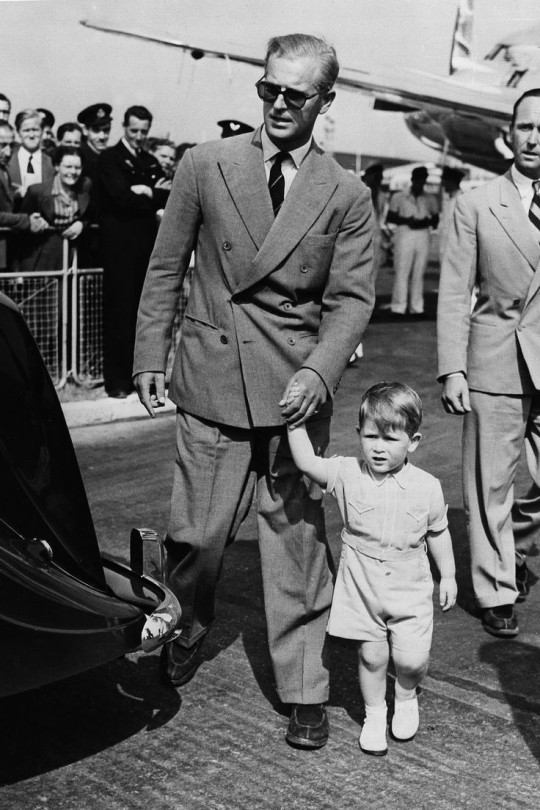

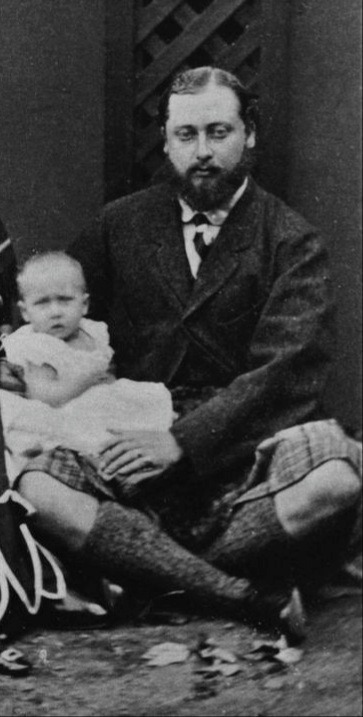
Christian & Alexandra, Albert & Elizabeth, George & Mary, Sasha & Olga, Nicholas & Tatiana, Philip & Charles, Ernest Louis & Elisabeth, and Edward & Louise.
#queen alexandra#alexandra of denmark#king christian ix of denmark#queen elizabeth ii#elizabeth windsor#king george vi#george vi#king george v#george v#princess mary#mary princess royal#tsar alexander iii#sasha#grand duchess olga alexandrovna#olga alexandrovna#tsar nicholas ii#tatiana nikolaevna#prince philip#duke of edinburgh#king charles iii#prince charles#grand duke ernest louis of hesse#ernest louis#princess elisabeth of hesse#king edward vii#albert edward prince of wales#princess louise duchess of fife#louise princess royal#father's day
29 notes
·
View notes
Text
Another interesting parallel between 화월가 (Last Flower) and 바람의 노래 (Song of the Wind) is that both perceptions of being left alone are valid and beautiful in their own way.
For this post, I will take the liberty to assume LF is told from k!Louis' perspective (as it came out during HOK5 era) and SOTW from k!Mujin's.
바람의 노래 (Song of the Wind) is all about k!Mujin explaining his loved one that it's okay if they forget him, that it was bound to happen no matter how cruel his fate is. It's a continuation of him being trapped in the magical tree of the land in order to protect it and its people. He does not know what eternity feels like, but he chooses to reassure his beloved instead.
“Even if you don't miss me, it's really okay,
Don't bother waiting, you can forget me and carry on leaving.”
k!Mujin chose his fate. He willingly trapped himself into that tree because it was what needed to be done if he wanted to save a kingdom he did not even know before. There is a sense of beautiful bravery and selflessness about k!Mujin, who sacrificed himself for the common good. He suffers greatly for his decision, but remains at peace and longs for his beloved. Does he regret it ? Of course, but it was what needed to be done.
화월가 (Last Flower) on the other end is full of anger and resentment, and it makes complete sense if it's about k!Louis. Unlike k!Mujin, k!Louis did not get to chose his fate. He simply woke up every day for ages, never getting old, and immortality is a bitter experience for the king. He considers himself to be a child trapped in time and loneliness, after all, what's lonelier than immortality ? You are bound to see all your loved ones die one after the other, over and over again, and all you can to is watch. He is angry at his beloved for leaving him, and hoping to see them again in his next life.
Eventually I will do a fully fleshed out analysis of the Moonlight Flower Tryptic (Promise, Last Flower and Song of the Wind) because they all showcase very similar experiences with different outcomes.
Unlike k!Mujin, k!Louis was unable to protect his loved one, and their absence is unbearable. He also mentions seeing them in the next life, which, as figurative as it can be, could also mean quite literally that this person will reincarnate in the future, therefore k!Louis will be able to see them again. He's suffering from his immortality, if anything he wishes he could just die so the reincarnation process would go faster (spring being a very common imagery for rebirth).
“Will spring really come to me too ?”
He's longing for his beloved, he is also longing for his death : he wants to die. He sings that he cannot live on now that they're gone, that he'll die of grief in their absence.
There is also the unavoidable loss of memory that comes with reincarnation. He's begging his loved one to not forget him and hoping that they will remember as they look through the horizon.
Find the fragments of memories scattered across the horizon
Oh blue bird, please convey my word
Even if we're under the same sky,
It's a cruel destiny where we can't be together
k!Louis hasn't accepted his fate because he's simply suffering from it. He had no say in his life and only suffers a great deal of pain caused by loneliness.
One king willingly locked himself up and renounced the world around him, the other lives on freely but would rather die and find a new fate instead.
#very rare mid-afternoon brainrot#kingdom#kingdom kpop#kingdom Mujin#kingdom louis#history of kingdom part v louis#history of kingdom part vi mujin#someone (king jahan) please save their poor souls if anyone (king jahan) could hear my request
15 notes
·
View notes
Text
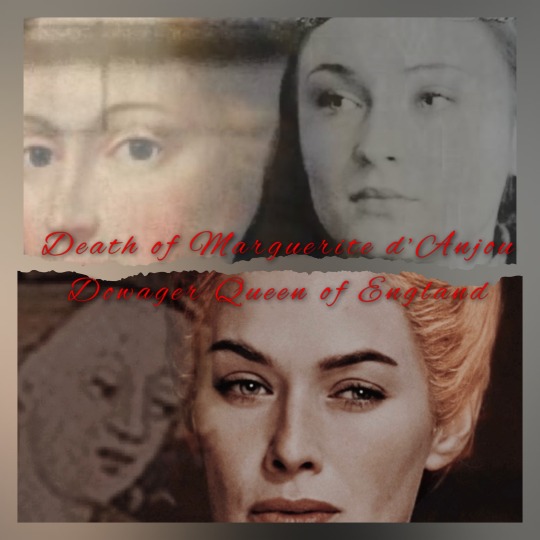
“24 August 1482
From the fairytale turrets of Saumur Castle, atop which golden fleur-de-lys glistened in the summer light, to the bulbous towers of Angers, where the château loomed on a cliff edge above the River Loire, the funeral cortege of Margaret of Anjou carried the queen on her last journey.
For six years she had been exiled back to the lands in which she grew up, a half-welcome guest of her father and King Louis, with little more than hunting dogs, books and a casket of relics to remind her of past glories. She was going now to rejoin her ancestors. Her last request to King Louis was that he would allow her to be buried with her parents: in their sepulchre at Angers Cathedral.
Since her capture at Tewksbury in 1471 Margaret's life had become one of solitary retirement. She had not stayed long in the Tower of London, although she must have been there when Henry was killed.
For a time she was kept at Windsor Castle, and by January 1472 she had moved to Wallingford in Oxfordshire, where her keeper was her old friend, Alice Chaucer, dowager duchess of Suffolk.
The women had once been close, Alice perhaps even having something of a maternal place in Margaret's heart. Since Suffolk's murder their lives had taken very different courses, and their enforced time together during Margaret's imprisonment cannot have been entirely happy.
Where Margaret had resisted the Yorkist regime with all her strength, Alice had come to terms with it even before Henry VI was first deposed. In 1458 Alice had overseen the marriage of her only child, John, to York's daughter Elizabeth. At the time this must have seemed a dangerous move, but her gamble had paid off. Her son still lived, a prominent member of the court of King Edward IV, and a king's brother-in-law.
Margaret, by contrast, had lost her family to the wars. Under house arrest, she was reliant on Edward to provide her with enough money to cover the expenses of herself and her servants.
One of those servants was Lady Katherine Vaux. Katherine had lost her husband, Margaret's old servant Sir William, at Tewksbury and the pair were bound so tightly together, whether through shared grief or the loyalty of many years' service, that Katherine stayed with Margaret until the end.
The pair of them probably appear in an image in the Guild Book of the London Skinners' Fraternity in 1475. Margaret wears an ermine-lined dark gown, her head covered like a nun, kneeling forward to read a religious text from her prayer book while a discarded crown and sceptre lie beside her. Behind Margaret is a more fashionably dressed woman, evidently in attendance on the queen, with her prayer book in her hands, her eyes more on her mistress than her prayers.
Both Katherine and Margaret were members of this fraternity in honour of the Assumption of the Virgin Mary who Margaret, like Henry, always particularly revered. As this image in the Skinners' record suggests, Margaret's imprisonment under Edward IV was not especially stringent.
Other members of the Skinners' Guild Fraternity included Queen Elizabeth Woodville and her ladies, so the fraternity would not have risked their ire by welcoming Margaret without their consent.
Margaret was provided with clothing, mostly black, at royal expense and had enough freedom not only to join this guild but also to enjoy the services of the dean of Edward's chapel in 1474. Having moved from Wallingford to London for most of the intervening years, in 1475 an international treaty between Edward and Louis XI was finalized that ransomed Margaret to Louis for £50,000.
In return for being able to return to her father's territories with a small pension from Louis, Margaret was forced to renounce all of her claims not only in England but also in France. The woman who had clung so tenaciously to her family's right to the English crown was now willing to give up virtually everything she owned to go home. After all, there was no one to inherit her titles or lands after her death. Thus, in November 1475, she was transferred into the keeping of Sir Thomas Montgomery to be escorted to France.
For several years Margaret lived in her father's castle at Reculée, near Angers, but when René died in 1480 she had to rely on one of his servants to provide her literary interests. Some years earlier she had commissioned the Burgundian memoirist Georges Chastellain to write Le Temple de Bocace, a consolation piece dwelling on the changing fortunes of the world and the unjust criticism that had been levelled at her.
Presumably she also occasionally rode or hunted through the verdant rolling fields and woodland surrounding her, enjoying at least one pastime from her old life. Margaret may have ridden from her modest home at Dampierre to the more imposing Château Montsoreau on the banks of the River Loire, over time she developed enough of a relationship with he castle's owner, Madame de Montsoreau, to gift her all of her hunting dogs shortly before her death - a high-status offering for a lady who had perhaps been a friend in the queen's last years.
In the summer heat of 1482 Margaret fell ill and, with the faithful Katherine Vaux at her side, she made her last will and testament on 2 August. Louis XI, who had once mocked her proud writing style, would have found little to displease him in the humble petitions that filled this short document.
'Sound of mind, reason and thought, however weak and feeble of body', Margaret asked to be buried in the cathedral church of St Maurice in Angers beside her parents, 'in whatever manner it pleases the king to ordain, or in another place if he prefers'.
She wrote that she did not have enough money to cover the cost of the funeral and suggested that Louis sold her remaining possessions to pay for her burial - as indeed he did.
And perhaps thinking of Lady Katherine, she 'recommend(ed] very humbly and affectionately' her 'poor servants... to the good grace and charity of the said King'. She had evidently lived on the charity of others for some time, and implored Louis, as her sole heir, to cover any remaining debts she had incurred.
Louis did as Margaret asked and had her honourably buried with her parents, but he insisted on reclaiming the hunting dogs that she had gifted to Madame de Montsoreau. 'You know (Margaret] has made me her heir, the king reminded Montsoreau in a letter written days before the queen actually died, 'and that this is all I shall get; also it is what I love best. I pray you not to keep any back, [or] you would cause me a terribly great displeasure’.
Even in death, Henry and Margaret were the pawns of others.”
JOHNSON, Lauren. “Life and Death of Henry VI”.
Fan cast: Sophie Turner as young Marguerite and Lena Headey as Queen Marguerite.
#margaret of anjou#Marguerite d’Anjou#reine marguerite d'angleterre#queen Marguerite#queen margaret of Anjou#queen margaret#house of lancaster#Plantagenet dynasty#wars of the roses#cousin’s wars#Katherine vaux#Alice chaucer#Edward iv#Elizabeth of York#duchess of Suffolk#Henry VI#king Henry VI#Louis XI of France#Louis XI
19 notes
·
View notes
Text


📚 QUEERBOOK 2024 is hereee! We made a book by and for LGBTQ+ youth! 🏳️⚧️🏳️🌈
Last year, we asked LGBTQ+ youth: what's your idea of a "queer utopia?"
Not gonna lie - with more than 150 bills introduced in 35 states in 2023 that aimed to restrict student access to inclusive and diverse books and other library materials, the theme felt pretty radical.
And you DELIVERED. With the help of our Youth Voices (amazing queer youth activists from across the country), we compiled your amazing submissions of poetry, short essays and letters, visual art, photography, and more into Queerbook 2024. Like a yearbook, it captures what queer youth are feeling, going through, and hoping for - right here, right now across the U.S.
It's also no accident that it's the perfect small-ish size to stash in your locker or backpack so you can crack it open any time you're looking for some queer connection. :3
Read some more about the book and grab your own limited-run copy of Queerbook 2024 now here.

644 notes
·
View notes
Text
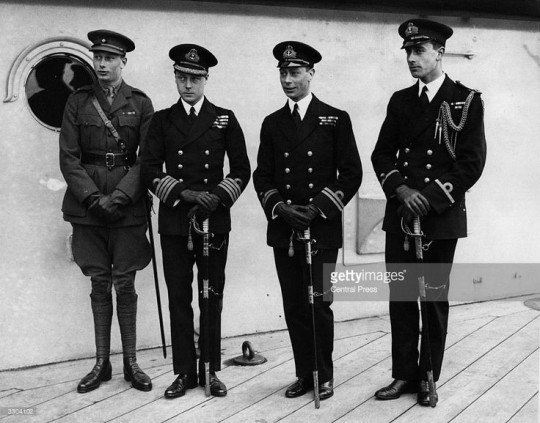
1920 : Prince Edward of Wales on Board Ship prior to his departure for his Tour of Australia with his two brother's Henry, Duke of Gloucester and George, Duke of York, & Louis Mountbatten
#1920#Prince Edward of Wales#Henry Duke of Gloucester#George Duke of York#Louis Mountbatten#The Royal Family#Future King George VI#The British Royal Family#British Royal Family
3 notes
·
View notes
Text
Daughter of Empire: My Life as a Mountbatten by Lady Pamela Hicks #RoyalFamily #BookReview
The #AudiblePlus catalog had several books on the #royalfamily included with membership, so I am making my way through them. #DaughterofEmpire #MyLifeasaMountbatten is about #PrincePhilip's cousin, #LadyPAmelaHicks #LouisMountbatten #memoir #audiobook
Few families can boast of not one but two saints among their ancestors, a great-aunt who was the last tsarina of Russia, a father who was Grace Kelly’s pinup, and a grandmother who was not only a princess but could also argue the finer points of naval law. Pamela Mountbatten entered a remarkable family when she was born at the very end of the Roaring Twenties.
As the younger daughter of the…

View On WordPress
#Battenburg#Daughter of Empire: My Life as a Mountbatten#Duke of Edinburgh#Gandhi#India#King George VI#Lady Pamela Hicks#Lord Admiral#Louis Mountbatten#Mountbatten#Nehru#Pamela Mountbatten#Patricia Mountbatten#Philip Mountbatten#Princess Elizabeth#Princess Margaret#Queen Elizabeth II#Royal Family#Viceroy#World War II
4 notes
·
View notes
Text
The Formation of the Valois Burgundian Empire - Philip the Good
Part Three in a four-part series on the formation of the Valois Burgundian Empire - Philip the Good
Philip the Good, Duke of Burgundy
Philip the Good, third Valois Duke of Burgundy, was born to Margaret of Bavaria on July 31, 1396, at Dijon. He married Michelle de Valois, daughter of King Charles VI of France in 1409. The assassination of his father in 1419 left him devastated but after sufficient mourning, he went to work expanding his territories through purchase and diplomacy, marriages,…
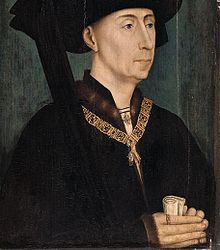
View On WordPress
#Burgundian empire#Charles VII#Duke of Burgundy#French history#Henry V#Henry VI#John Duke of Bedford#King of England#King of France#Louis XI#medieval history#Philip the Good#Valois dynasty
3 notes
·
View notes
Text
An absence of family strife
Their marriages were generally fruitful and, what was equally important, their sons were usually loyal, or at least obedient. There are remarkably few instances of rebellion against paternal authority. Robert the Pious did take arms against his father, probably in 996, and his own two sons Henri and Robert united against him in 1030; but these were isolated instances. The only other example that can be offered is the quarrel between Philip I and the future Louis VI, which may be attributed to the malicious intervention of the prince's stepmother, Queen Bertrada. If it demonstrates anything, it shows the patience and loyalty of Prince Louis under considerable provocation. No contemporary royal, or even noble, family, can show anything approaching so favourable a record in this respect.
The characters of the individual kings go some way towards explaining this absence of family strife. The Capetians were good husbands. Only two bastards are recorded for the fourteen kings of the dynasty: Isabella, daughter of Louis VI, who married Guillaume de Chaumont, and Pierre Charlot, the son of Philip Augustus and that 'damsel of Arras' whose name the chroniclers delicately omit. Only three scandals can be pointed to: the elopement of Philip I with Bertrada de Montfort, wife of Fulk of Anjou, on 15 May 1092; the estrangement of Philip Augustus and Ingeborg of Denmark in 1193; and the tragic episode of the daughters-in-law of Philip the Fair in 1314. The only excuse put forward for the first affair was the excessive obesity of the lawful queen ("praepinguis corpulentiae", according to William of Malmesbury); it would not be unfair to point out that the king himself, at the age of forty, was already very fat also. Dr Brachet has plausibly explained the behaviour of Philip Augustus as the consequence of the impact of a momentary anaphrodisia on a nervous system already strained by illness. Certainly, the adventure of the damsel of Arras apart, he does not appear to have led an irregular life. But we must look more closely at the third episode, which throws a vivid light on the moral values of the royal family.
Robert Fawtier - The Capetian Kings of France
#xi#xii#xiii#xiv#robert fawtier#the capetian kings of france#robert ii#henri i#robert i de bourgogne#philippe i#louis vi#bertrade de montfort#isabelle#pierre charlot#philippe ii#la demoiselle d'arras#philippe iv#berthe de hollande#marguerite de bourgogne#jeanne ii de bourgogne#blanche de bourgogne#ingeborg de danemark#foulques iv d'anjou
1 note
·
View note
Text


📚 QUEERBOOK 2024 is hereee! We made a book by and for LGBTQ+ youth! 🏳️⚧️🏳️🌈
Last year, we asked LGBTQ+ youth: what's your idea of a "queer utopia?"
Not gonna lie - with more than 150 bills introduced in 35 states in 2023 that aimed to restrict student access to inclusive and diverse books and other library materials, the theme felt pretty radical.
And you DELIVERED. With the help of our Youth Voices (amazing queer youth activists from across the country), we compiled your amazing submissions of poetry, short essays and letters, visual art, photography, and more into Queerbook 2024. Like a yearbook, it captures what queer youth are feeling, going through, and hoping for - right here, right now across the U.S.
It's also no accident that it's the perfect small-ish size to stash in your locker or backpack so you can crack it open any time you're looking for some queer connection. :3
Read some more about the book and grab your own limited-run copy of Queerbook 2024 now here.

644 notes
·
View notes